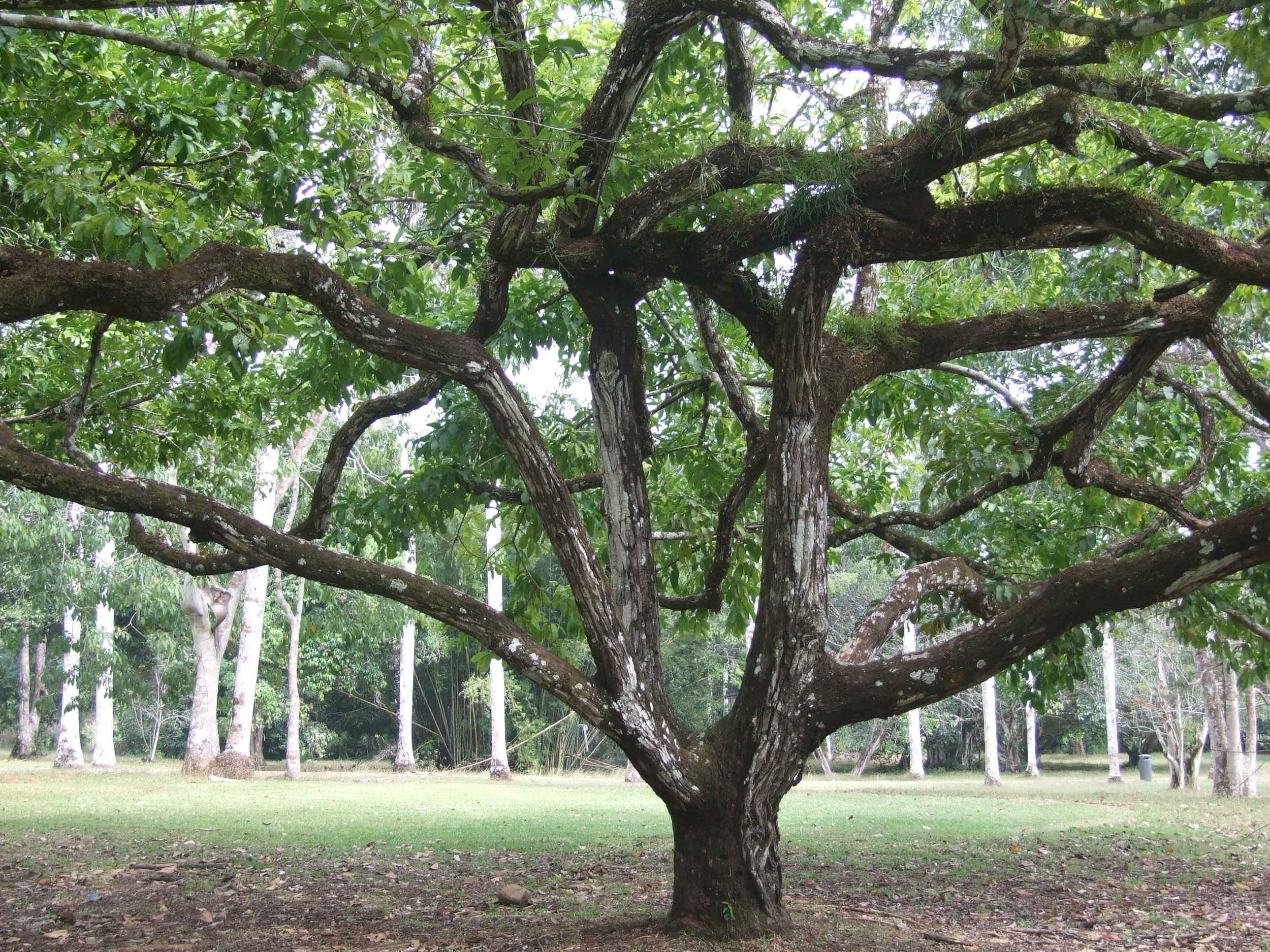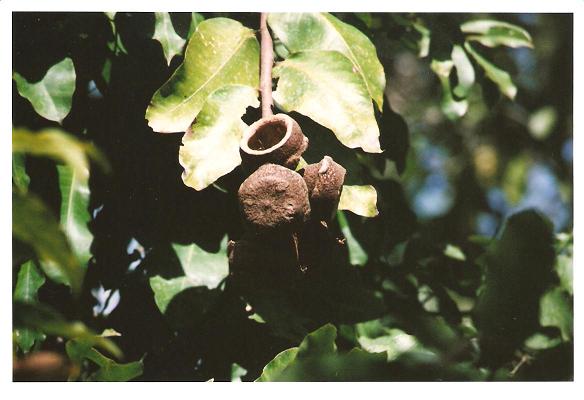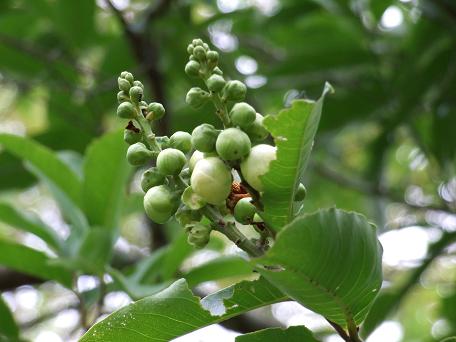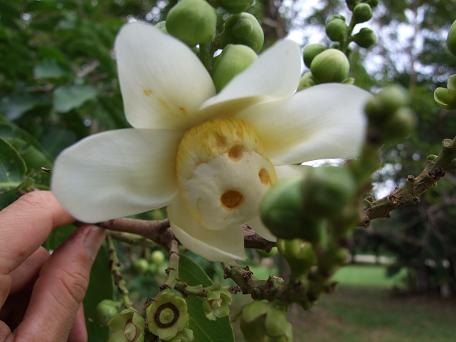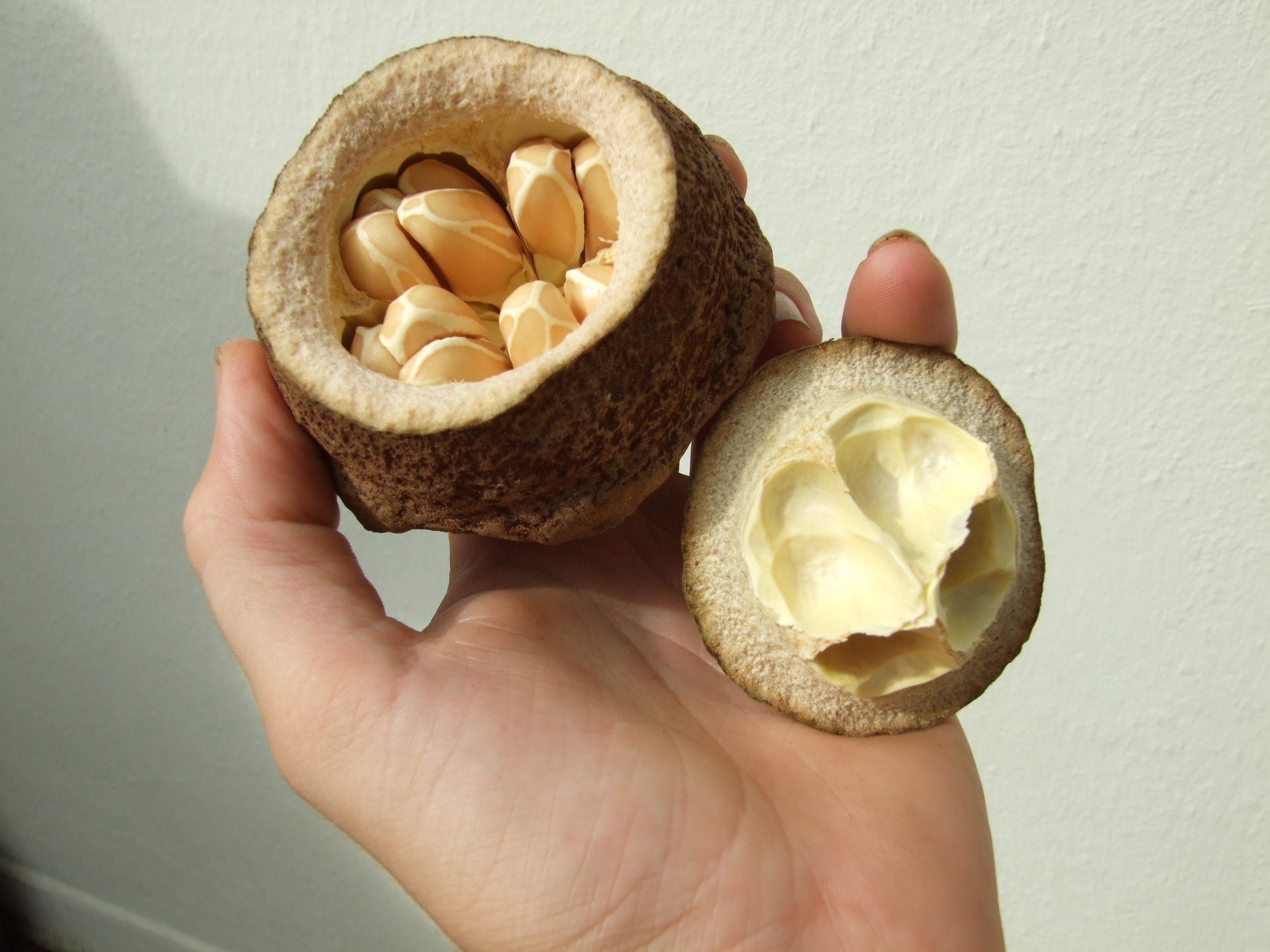This is a fantastic tree. I found it in a stand of three in a somewhat neglected Summit botanic gardens outside of Panama City. I have collected seed from these trees for years. Today all of the other Lecythis spp. were flowering profusely, this one was full of ripe pods. I already have about ten very healthy trees going in my nursery. Inside the baseball size capsule (a miniature version of L. zabucajo), there are numerous nuts packed together. A cream colored aril is attached to the end of each nut, the aril tastes like anise but I'm not entirely sure if its edible. The nut itself is one of the best tasting tropical nuts I have eaten, identical in taste to its close relatives, perhaps superior to Brazil Nut, although maybe that's because I was eating them fresh.The nut can be eaten fresh or roasted. In Brazil, an oil is extracted from the nuts to make soap.
The Pili nut (Canarium ovatum) is another great tropical nut.
See related info in entry for Lecythis zabucajo, Sapucaia Nut
